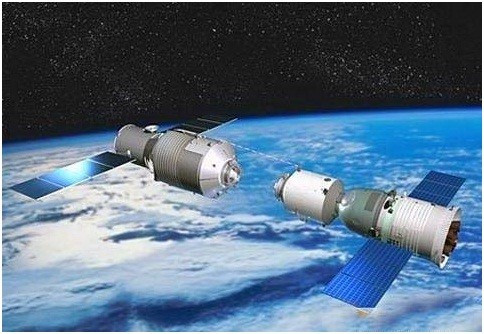Chinese Astronauts Accomplish First Manual Docking

Chinese astronauts in the Shenzhou 9 spacecraft successfully made their first manual docking with space station Tiangong-1 on Sunday at around 04:00 GMT. Previously, China had accomplished only automated docking.
Shenzhou 9 is a manned spacecraft launched on 16 June 2012. It is carrying three astronauts: Jing Haipeng, Liu Wang and China's first woman astronaut Liu Yang. The astronauts' team is led by Jing Haipeng, 46, who has already visited the Tiangong 1 space lab in 2008.
Chinese scientists claim that the first automatic docking with the Tiangong-1 took place on 18 June.
Chinese national television broadcast images of Jing Haipeng, Liu Wang and Liu Yang, smiling after completing the exercise, according to a BBC report.
The astronauts are reportedly celebrating the success of their mission with some Chinese delicacy.
Just half hour before the spacecraft could dock with the Tiangong-1, Shenzhou-9 parted from the Tiangong-1 to a berth point 400 metres away from the space lab. To leave room for adjustment, astronomers set up three berth points for the spaceship on the same orbit, according to Xinhuanet, a Chinese news journal.
The first berth was 400 metres away from the space lab; the second berth point was 140 metres away and the third berth point 30 metres and finally the dock with the space lab.
Chinese scientists say it is a great achievement for China because manual docking technique is hard to master as it involves two vessels - placed in the same orbit and revolving around earth at thousands of kilometres (miles) per hour - coming together very gently to avoid destroying each other, according to AFP.
It is a very important mission, as it requires a lot of skills and techniques to manually dock with the space station. The world's first docking of two spacecraft was accomplished on 16 March, 1966, when Gemini 8 rendezvoused and docked with an unmanned Agena Target Vehicle.
"Compared with automatic docking, manual docking is more challenging in terms of orbit control," AFP quoted Xie Jianfeng, a scientist at the Beijing Aerospace Control Centre, as saying.
Apart from the manual docking, China has taken another major step by sending the first Chinese woman into space.
Now, scientists believe that China has completely grasped space rendezvous and docking technologies and the country is fully capable of transporting humans and cargo to an orbiter in space, which is essential for building a space station in 2020, according to Xinhuanet.
© Copyright IBTimes 2025. All rights reserved.




















